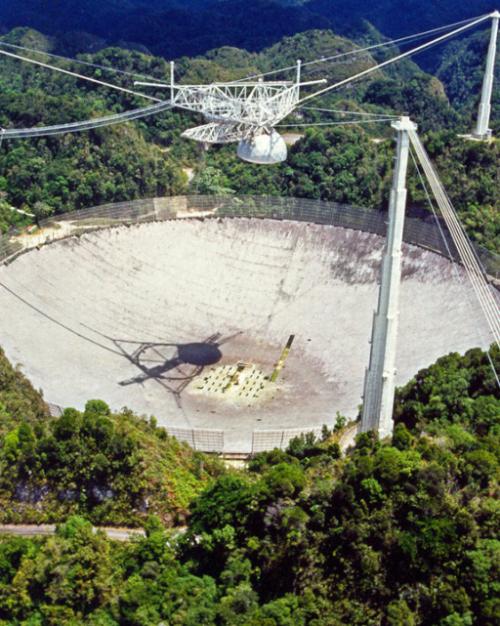When the celebrated poet A.R. Ammons came to teach at Cornell in 1964, he was initially disappointed. Not in the university or the students or academic life, but in the geology. As he noted in an interview at the time, “I don’t understand all these rocks.”
Having just arrived from southern New Jersey, Ammons was accustomed to the Garden State’s tributaries, marshes and pinelands, and he had difficulty connecting to the Ithaca landscape, according to Roger Gilbert, professor of literatures in English in the College of Arts and Sciences.
That all changed when Ammons wrote “Cascadilla Falls.” The poem, which is the centerpiece of a community celebration April 26, describes the experience of discovering a stone in a stream below the falls and feeling an intimate connection both with the hand-sized, kidney-shaped object and the sprawling universe beyond it:
the 800 mph earth spin,
the 190-million-mile yearly
displacement around the sun,
the overriding
grand
haul
of the galaxy with the 30,000
mph of where
the sun’s going
“I think it’s an important poem in terms of his relation to the Ithaca landscape, the waterfalls, the streams, the rocks and the gorges,” Gilbert said. “And it really did move his poetry in a different direction. He took his cue from landscapes to a large degree, and engaging with the gorges opened up exciting new ways of seeing and thinking and writing for him.”
The April 26 celebration, “Ammons & the Falls,” will include:
- The unveiling of a new permanent display of Ammons’ poem “Triphammer Bridge” at its namesake location, at 4 p.m., followed by the unveiling of a display of “Cascadilla Falls” near the gorge entrance beside the Schwartz Center for the Performing Arts.
- A screening of a recent episode of the PBS series “Poetry in America” that explores the many facets of “Cascadilla Falls,” at the Schwarz Center’s Film Forum, at 5 p.m.
- The screening will be followed by a panel discussion and Q&A, featuring Gilbert; “Poetry in America” creator and host Elisa New; Geoffrey Abers, the William and Katherine Snee Professor in Geological Sciences in the College of Engineering; Warren Allmon, the director of the Paleontological Research Institution and the Hunter R. Rawlings III Professor of Paleontology; and Larry Berger, chief executive officer of Amplify, an educational curriculum publisher.
- A tour through Cascadilla gorge, led by Allmon, at 6:15 p.m.
Both the PBS episode and the event panel bring together an interdisciplinary mix of commentators, reflecting the eclectic range of Ammons’ work, which could flit from nature to the sciences to metaphysics, all rendered in eloquent – yet accessible – language, at times leavened with bawdy humor.
Gilbert says “Cascadilla Falls” is a perfect example of Ammons’ aesthetic, and he himself has used the poem for various audiences, particularly those – such as his freshmen advising seminar and students in STEM fields – who may think they have no interest in poetry.
“It shows them that poetry has something to say about the world of science. And that may give them a perspective on it they wouldn’t get strictly from the sciences themselves,” said Gilbert, who was the poet’s colleague and friend, and co-edited the book “Considering the Radiance: Essays on the Poetry of A.R. Ammons.” For the last 15 years, he has been steadily working on a biography of Ammons.
These efforts have meant that Gilbert is always on the lookout for opportunities to highlight Ammons’ importance and presence at Cornell, where the poet continued to teach until he retired in 1998. The two-time National Book Award winner died in Ithaca, at 75, in Feb. 2001.
“I don’t want to get in trouble with any of my friends and colleagues, but I would say he was the most illustrious and acclaimed poet to teach at Cornell during the 20th century,” Gilbert said. “Ammons received all the major honors and accolades one can get. But beyond that, he is seen as a major figure in American poetry. He is to the second half of the 20th century what poets like Robert Frost and William Carlos Williams and Wallace Stevens and Marianne Moore were to the first half.”
The university proved to be the ideal place for a polymath mind like Ammons, as evidenced by Carl Sagan, Roald Hoffmann, Thomas Pynchon, Ammons’ students Diane Ackerman and Alice Fulton, and other Cornellians who have thrived in the cross-pollination of the arts and the sciences.
“I think that is part of the DNA of Cornell, more than other universities,” Gilbert said. “And I do think Ammons’ legacy at Cornell has to do with a certain openness to seeing connections between the humanities and the sciences, between the literary imagination and the scientific mind, not imposing strict barriers between culture and nature, or science and art, but seeing all of them as flowing together at many different points.”
The “Cascadilla Falls” episode of “Poetry in America” will air in Ithaca as part of a PBS two-day marathon on the local WORLD Channel at 3 p.m. on April 27.
Read the story in the Cornell Chronicle.




